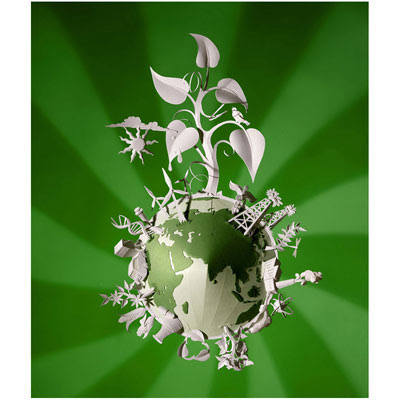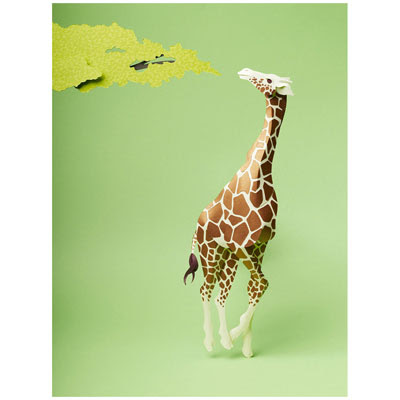



Hi Gemma,
First of all, it's so nice to hear from a young artist like yourself...I am wondering where you heard about me. Thank you for your interest in my work. It is gratifying to know that it has some interest and value beyond the obvious commercial applications.
I would be glad to answer your questions, and it is fine if you want to put them on your blog. I WILL ANSWER THEM IN BOLD.
I would also like to know something about you and your work, and what you want to do after you get out of college.
So please keep in touch!
Best,
Jo Lynn
On Mon, Apr 25, 2011 at 10:48 AM, gemma beaven <
gemmabeaven7@gmail.com> wrote:
Dear: Jo Lynn Alcorn
My name is Gemma Beaven and I am a student at Stockport College in Manchester, currently in my third year studying illustration. I was wondering if i could ask you a couple of questions about your work, as I think it's fantastic! I'd really appreciative your input and advice as I'm coming to the end of my degree, so any direction would be welcomed. These are the questions I'm really eager to ask you:
Your work looks very cultural and a lot of it has lots of nature in them, when you create these stunning paper collages, what types of environment inspire you? Do you have certain designers you look at? Are you inspired by literature at all?
I AM DEFINITELY INSPIRED BY NATURE. I REALLY LOVE TO LOOK AT ANY AND ALL TYPE OF PLANTS, SHELLS, INSECTS, ANIMALS. I HAVE A SMALL COLLECTION OF SPECIMENS THAT WAS REALLY STARTED BY MY SON WHEN HE WAS LITTLE. WE COLLECTED NATURE TOGETHER THEN, AND I STILL PICK UP SHELLS AT THE BEACH, OR BUTTERFLIES OR FEATHERS, OR WHATEVER.
I OFTEN LOOK AT THE WORK OF PHOTOGRAPHERS WHO PHOTOGRAPH NATURE. ONE I PARTICULARLY LOVE IS KARL BLOSSFELDT. HE WAS A 19TH CENTURY GERMAN PHOTOGRAPHER WHO MOSTLY TOOK PICTURES OF SEED PODS, AND FLOWERS AND PLANTS AFTER THEY WERE DONE FLOWERING. BUT HE STARTED OUT AS A WROUGHT IRON CRAFTSMAN, AND YOU CAN SEE THE CONNECTION BETWEEN THOSE DESIGNS AND THE "DESIGNS" IN NATURE. ROBERT MAPPLETHORPE'S NATURE PHOTOGRAPHY IS AMAZING TO LOOK AT, AS IS IRVING PENN'S (INTERESTINGLY HE WAS KNOWN FOR HIS FASHION WORK, NOT SO MUCH THESE).
FOR COLLAGE INSPIRATION THERE IS MATISSE, OF COURSE!, ROMARE BEARDEN, ERIC CARLE, THE CHILDREN'S BOOK AUTHOR.
AND I LOVE THE WORK OF CHARLIE HARPER WHO WAS A MASTER DESIGNER. HE STYLIZED BIRDS AND OTHER NATURAL FORMS TO THE MOST ELEGANTLY MINIMAL STATE. SO TAKE A LOOK AT HIM. I LOVE ALL THE OLD JAPANESE WOODBLOCK ARTISTS. AND I THINK, SINCE I WAS A PRINTMAKING MAJOR IN COLLEGE, I DO THINK IN TERMS OF LAYERS, WHICH LENDS ITSELF TO MY CUT PAPER TECHNIQUE,
AND IS ALSO HELPFUL IN WORKING IN ILLUSTRATOR ON THE COMPUTER. I BASICALLY THINK IN SHAPES, TEXTURES, COLORS, LAYERS.
FOR SHEER BRILLIANCE IN AN ARTISTIC RELATIONSHIP TO AND WITH NATURE, I LOOK AT ANDY GOLDSWORTHY, THE CONCEPTUAL ARTIST. BUT THERE ARE SO MANY INFLUENCES AND THINGS TO LOOK AT...THESE ARE JUST A FEW.
WHO ARE YOU INSPIRED BY?
By looking at your work, you seem to be incredibly talented at what you do especially working with paper, have you attended book binding classes or paper craft classes to develop your skills? Do you cut everything out by hand?
THANKS! I DID TAKE A BOOKBINDING CLASS IN COLLEGE, THOUGH I DON'T REALLY THINK THAT ENTERS MUCH INTO WHAT I ENDED UP DOING, BUT PERHAPS THE LOVE OF PAPER STARTED THERE. IN PRINTMAKING TOO, THERE WERE ALWAYS THE PAPERS TO BE CHOSEN, AND I LOVED THAT. I NEVER TOOK A CLASS IN PAPER CRAFTS OR PAPERMAKING (I'D LIKE TO!), SO I GUESS YOU'D SAY I'M SELF TAUGHT. I THINK OF MYSELF AS A REALLY GOOD PROBLEM SOLVER BEFORE ANYTHING ELSE.
You use a lot of paper in your work, what other tools do you like to work with?
SOMETIMES I PAINT AND PATTERN THE PAPERS, USING GOLDENS ACRYLIC PAINTS. I LIKE TO CREATE PASTE PAPERS, WHICH INVOLVES ADDING PASTE TO PIGMENT (SOMEWHAT LIKE FINGER PAINTS, IN THAT YOU APPLY A UNIFORM COAT OF THE COLORED PASTE AND THEN CREATE PATTERNS BY COMBING THROUGH IT OR EVEN USING YOUR FINGERS). FUN! I USE ARCHIVAL WHITE GLUE, 2 SIDED FOAMTAPE, AND 2 SIDED FILM TAPE FOR ADHESIVES. I USE BALSA WOOD AND FOAM CORE FOR BUILDING UP THE ELEMENTS OF MY ILLUSTRATIONS TO MAKE THEM MORE DIMENSIONAL. SOMETIMES I RAISE THE ELEMENTS UP BY GLUEING THEM TO ALUMINUM RODS WITH A GLUE GUN AND STICKING THEM INTO THE FOAMCORE BOARD WHICH IS THE BASE OF THE ILLUSTRATION. I USE EXACTO KNIVES AND GOOD QUALITY SCISSORS TO CUT OUT MOST PIECES, BUT RECENTLY I DID GET A ROBOTIC CUTTING MACHINE AND IT DOES INCREDIBLE WORK. I CREATE THE TEMPLATES IN ILLUSTRATOR AND SEND THEM TO THE MACHINE USING SPECIAL SOFTWARE.
When creating an image, how do you design the layout or the composition? Do you sketch it all out first and then begin to construct your paper collages? Or do you construct your paper elements and then try and design the composition?
I SKETCH IT OUT FIRST WITH PENCIL AND MARKER. I USUALLY DRAW AND THEN SCAN EACH ELEMENT WITHIN A LAYOUT SEPARATELY. THAT GIVES ME MAXIMUM FLEXIBILITY. SO FOR INSTANCE, WITH THE INDIAN JEWELS PIECE, I HAD A SEPARATE SCAN FOR EACH ELEPHANT, DANCER, FLOWER, LEAF, ETC. THEN I COULD MOVE, RESIZE, RECOMPOSE AS MUCH AS I WANTED. ONLY AFTER THE CLIENT APPROVES THE SKETCH DO I BEGIN TO CUT. THERE ARE EXCEPTIONS...SOMETIMES THE CLIENT WANTS TO SEE A SAMPLE OF WHAT THE PAPER ART WOULD LOOK LIKE, SO I DO THAT FIRST.
My favorite images of your work are the 'Indian jewels' compositions, how did you incorporate the jewellery into your images, did you plan this in the composition beforehand or did you add them in as a later element?
I HAD LOW RES IMAGES OF THE JEWELRY, WHICH I INCORPORATED INTO MY SKETCHES. THAT JOB WAS ACTUALLY A LOT OF FUN, BECAUSE THEY GAVE ME COMPLETE FREEDOM TO FIGURE OUT HOW AND WHERE TO USE THE JEWELS. THEY JUST ASKED THAT I USE THEM TO MAKE AN INDIAN WEDDING PROCESSION. SO THE CONCEPTUAL PART OF IT WAS A BIG CHALLENGE.
How do you create the three-dimensional aspect to your work?
FIRST, THE PAPERS ARE OFTEN FOLDED OR CURLED OR CREASED, ANYTHING TO CREATE DIMENSION AND PICK UP LIGHT. THEN THE WHOLE PIECE IS BUILT IN RAISED LEVELS, USING THE FOAMCORE, BALSA, OR ALUMINUM RODS I MENTIONED BEFORE.
ANOTHER VERY IMPORTANT ASPECT TO THE DIMENSIONALITY IS THE LIGHTING...THIS IS THE WORK OF THE PHOTOGRAPHER, WHO WORKS TO CREATE INTERESTING SHADOWS. WHITE ON WHITE PIECES ARE SPECIAL CHALLENGES IN TERMS OF PHOTOGRAPHY.
MY WORK IS ALWAYS PROFESSIONALLY PHOTOGRAPHED. I SHOULD MENTION THAT THIS IS AN IMPORTANT ISSUE WHEN IT COMES TO THE FEE FOR MY WORK, BECAUSE IT IS A COST ON TOP OF MY OWN FEE. THE PHOTOGRAPHER IS PAID SEPARATELY, AND THE CLIENT MUST UNDERSTAND THAT IF THEY WANT MY WORK THEY HAVE TO PAY THIS ADDED CHARGE. SOMETIMES THEY DON'T WANT TO!
Its says on your website that you have done a lot of work for China and Japan, how do you get into this kind of work? How did that sort of opportunity come by?
YOU MENTIONED THE INDIAN WEDDING PIECE. THAT PIECE HAPPENED TO BE PIVOTAL IN MY CAREER BECAUSE IT WAS MY FIRST WORK FOR FASHION, EVEN THOUGH IT WAS EDITORIAL. IT KIND OF LAUNCHED ME IN THE NICHE OF "EMBEDDING PRODUCTS IN ILLUSTRATIONS." I WAS VERY FORTUNATE TO BE NOTICED AND HIRED BY A GREAT CREATIVE DESIGNER NAMED RICHARD CHRISTIANSEN, WHO NOW HAS HIS OWN CREATIVE FIRM NAMED CHANDELIER CREATIVE. IT WAS AN EXCITING JOB, AND IT LED ME TO MANY OTHERS.
I WAS HIRED SOON AFTER BY RICHARD TO DO THE SHANGHAI TANG CATALOG, AND ALSO WORKED WITH HIM ON SEVERAL THINGS FOR LANE CRAWFORD. EVENTUALLY, I WAS INVITED TO DO A MURAL IN BEIJING FOR LANE CRAWFORD, AND WENT THERE IN 2007. I AM SET TO DO AN INSTALLATION IN HONG KONG FOR LANE CRAWFORD IN MAY.
SO ONE THING LEADS TO ANOTHER, AND SOMETIMES ALL YOU NEED IS ONE GOOD BREAK. AT THE TIME THAT I DID THE INDIAN JEWELRY JOB, I WAS MOSTLY DOING CHILDREN'S EDITORIAL ILLUSTRATION, BUT STRUGGLING BECAUSE AS YOU PROBABLY KNOW, IT PAYS VERY LITTLE...AND NO ONE WANTED TO PAY THAT EXTRA PHOTOGRAPHY CHARGE.
I ALSO FELT I WANTED TO DO SOMETHING MORE SOPHISTICATED AND ELEGANT, AND SO WHEN I GOT THAT ASSIGNMENT TO DO THE INDIAN JEWELS IT WAS JUST PERFECT. I ALSO DID THE MACY'S FLOWER SHOW AT AROUND THE SAME TIME. I WAS TURNING 50 AROUND THEN, SO IT FELT LIKE A PRETTY NICE BREAK!
IT ALSO CONNECTED ME WITH A PHOTOGRAPHER WHO I HAVE SINCE WORKED WITH MANY MANY TIMES AND HE IS MY FAVORITE PHOTOGRAPHER OF MY WORK. HE IS A JAPANESE PHOTOGRAPHER NAMED KANJI ISHII.
You do a lot of advertisement briefs, how long do you usually get to create an image for one of these briefs? Also how did you get into this type of work within the industry?
IT DEPENDS, BUT USUALLY TIME IS VERY SHORT, TOO SHORT. THE TIME FRAME IN ADVERTISING IS YESTERDAY!
I NOW HAVE AGENTS, FARIMAH MILANI IN NEW YORK, AND LT2 AGENCY IN PARIS. THEY ARE VERY CONNECTED WITH THE WORLD OF ADVERTISING, FASHION, COSMETICS, SO THEY GET ME ALL THIS GREAT WORK IN THE INDUSTRY. I AM VERY LUCKY.
And for my last question, would I be able to display this information onto my blog?
YES, OF COURSE.
AS FOR ADVICE, I WOULD SAY, JUST WORK HARD, KEEP AT IT, AND MAKE SURE YOU'RE STILL HAVING FUN. I ONLY STARTED TO GET ANYWHERE WHEN I RELAXED AND DID WHAT I WANTED TO. TAKE RISKS, DON'T BE AFRAID. STEP OUT! TRY TO GET AS MUCH EXPOSURE AS YOU CAN...DO YOU HAVE AN ONLINE PORTFOLIO?
I REALLY DO BELIEVE THAT IF YOU'RE GOOD AT WHAT YOU DO, EVENTUALLY YOU WILL GET NOTICED. IT MAY TAKE A LONG TIME, SO HANG IN THERE!
HOPE THIS HELPS!
BEST,
JO LYNN

















































